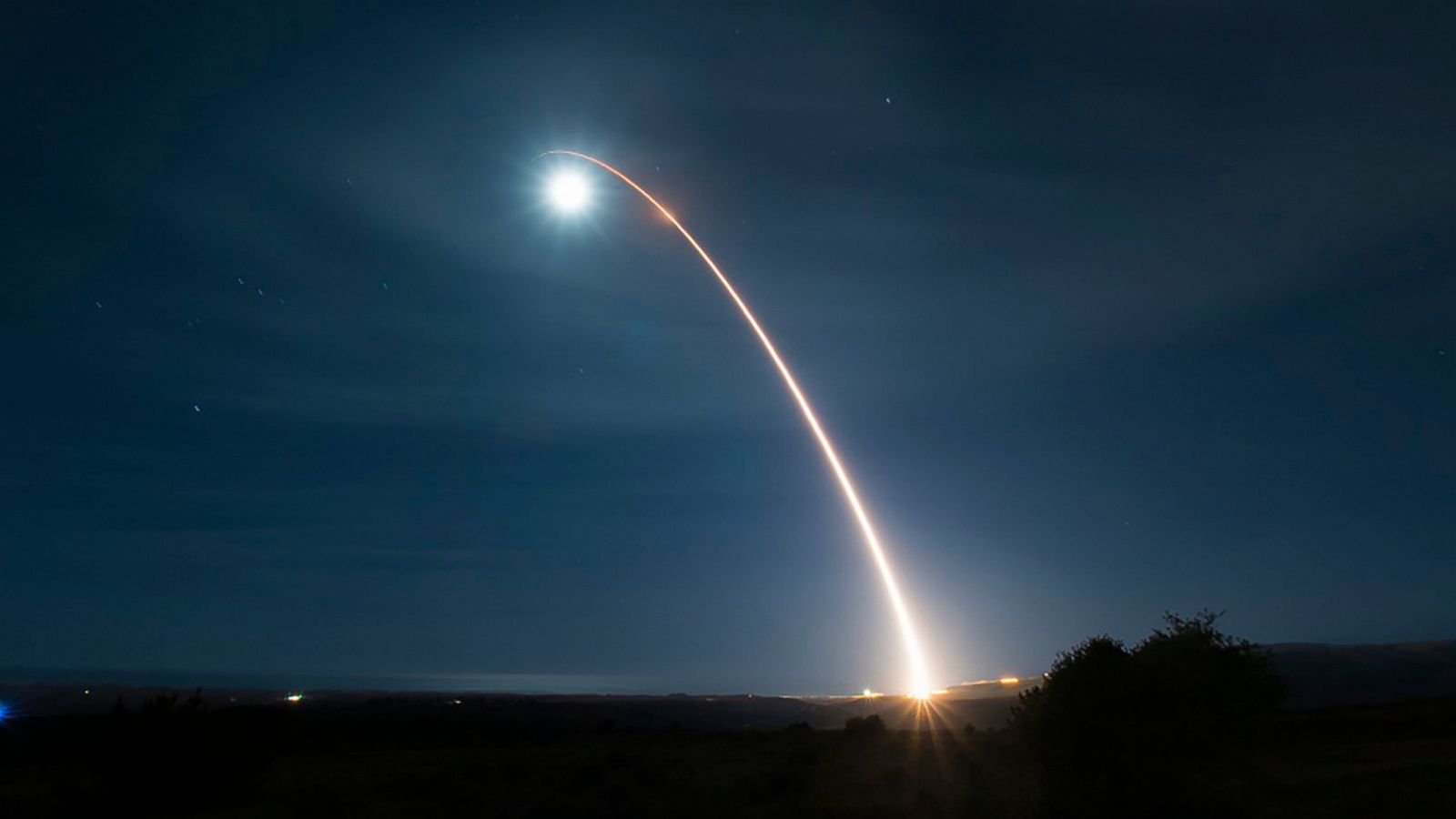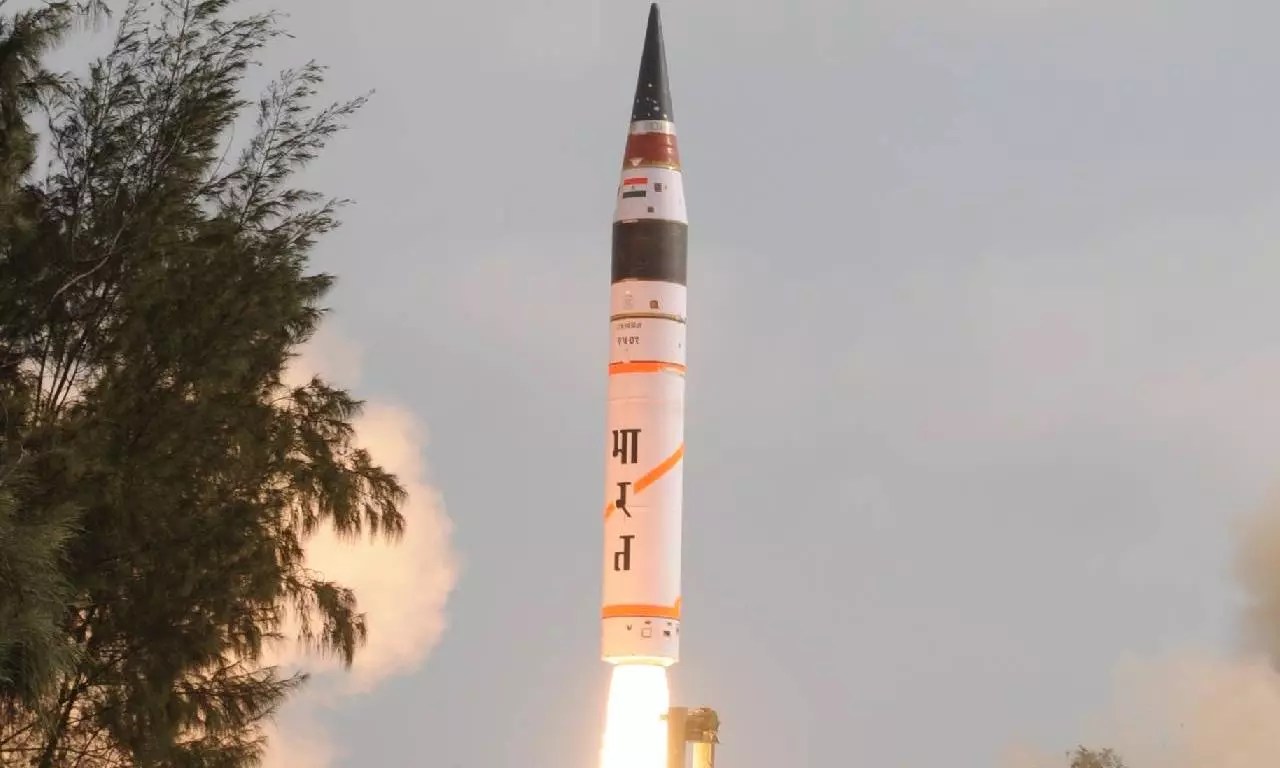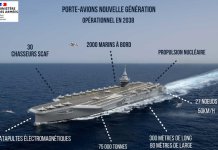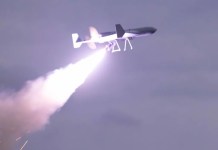The United States has fired an unarmed intercontinental ballistic missile (ICBM) after President Donald Trump called for restarting the nuclear weapons tests, becoming the fifth country to have tested an ICBM since 2024.
The Minuteman III doomsday missile, also known as a city-killer, which is capable of hitting Moscow and Beijing within minutes, was launched by the Air Force Global Strike Command on November 5.
The GT 254 nuclear-capable missile was launched from the Vandenberg Space Force Base in California, and it landed near the Army’s Ronald Reagan Ballistic Missile Defense Test Site in the Marshall Islands, covering a distance of over 6,700 kilometers.
The purpose of the test was to assess the reliability, combat readiness, and accuracy of the missile system, a cornerstone of America’s national defense and its nuclear triad.
“GT 254 is not just a launch – it’s a comprehensive assessment to verify and validate the ICBM system’s ability to perform its critical mission,” said Lt. Col. Karrie Wray, commander of the 576th Flight Test Squadron. “The data collected during the test is invaluable in ensuring the continued reliability and accuracy of the ICBM weapon system.”
According to a statement by the Vandenberg Space Force Base, “The unarmed ICBM’s reentry vehicle traveled approximately 4,200 miles to the U.S. Army Space and Missile Defense Command’s Ronald Reagan Ballistic Missile Defense Test Site at the Kwajalein Atoll in the Republic of the Marshall Islands.”
The LGM-30G Minuteman III
Notably, the U.S. Air Force currently operates only one type of intercontinental ballistic missile (ICBM) in its active inventory: the LGM-30G Minuteman III.
First deployed in 1970, it has undergone multiple life-extension programs to remain operational, with the latest upgrades ensuring viability into the 2030s. The Minuteman III is a silo-based, nuclear-capable missile that forms a key leg of the U.S. nuclear triad.
The Minuteman III will be replaced by LGM-35A Sentinel, which is under development but not yet operational.
The statement noted that the development of the new LGM-35A Sentinel missile and the maintenance of the combat readiness of the existing Minuteman III systems remain key priorities for the United States.
“As we modernize to the Sentinel weapon system, we must continue to maintain the readiness of the existing Minuteman III fleet. GT 254 helps fulfill that commitment, ensuring its continued accuracy and reliability,” said Gen. S.L. Davis, commander of Air Force Global Strike Command.
Meanwhile, spotters recently observed a B-52 bomber flying over California, equipped with a cruise missile that externally resembles the next-generation AGM-181A Long-Range Standoff (LRSO) missile.
The AGM-181A is intended to replace the outdated ALCM (B-version) nuclear cruise missiles.
Three Big Lessons From Mamdani’s Victory In New York, A City Dominated By Jewish American Community
The technical specifications of the nuclear-capable cruise missile, developed by Raytheon, remain classified.
The LRSO will be integrated with the strategic B-52 bombers and the under-development B-21 Raider.
However, for its ICBM capacity, the US remains completely dependent on the LGM-30G Minuteman III.
The “L” in LGM is the Department of Defense designation for silo-launched; “G” means surface attack; “M” stands for guided missile, the 30 stands for the Minuteman series of missiles, and the G after “30” is the current Minuteman III.
The current ICBM force consists of 400 Minuteman III missiles located at the 90th Missile Wing at F.E. Warren AFB, Wyo.; the 341st Missile Wing at Malmstrom AFB, Mont.; and the 91st Missile Wing at Minot AFB, N.D.
The ICBM has a range of 6,000-plus miles (5,218 nautical miles) and can travel at approximately 15,000 mph (Mach 23 or 24,000 kph) at burnout.
The test, which was scheduled months ago, has garnered attention after Trump ordered the military last week to begin testing America’s nuclear weapons for the first time in more than three decades.
The Trump Paradox: Why Is ‘President Of Peace’ Fueling “Unprecedented” Rally In Defense Stocks?
However, the US is by no means the only country to have tested an ICBM in recent times. In fact, four other countries have tested ICBMs since 2024.

A Flurry Of ICBM Tests Since 2024
Even though an ICBM has never been used in combat, most of the nuclear-powered countries maintain a credible and reliable arsenal of ICBMs as an essential part of their nuclear triad.
Since 2024, apart from the US, four other countries – India, Russia, China, and North Korea – have tested ICBMs, highlighting their significance in today’s world.
During this period, India has conducted two tests of Agni V, its nuclear-capable, three-stage, solid-fueled, ballistic missile, having a range of over 5,000 km.
In March 2024, India’s Defence Research and Development Organisation (DRDO) conducted the first successful flight test of the indigenously developed Agni-5 missile with Multiple Independently Targetable Re-Entry Vehicle (MIRV) technology.
MIRV capability is a complex technology, and India’s test put India among a small group of countries – the United States, United Kingdom, Russia, France, and China – that have developed it.
With MIRV technology, a single intercontinental ballistic missile (ICBM) can carry and deliver multiple warheads at different locations several hundred kilometers apart.
However, there is some debate about Agni V’s ICBM status.
The Agni-V, which currently has an officially claimed range of 5,000 km, technically qualifies only as an intermediate-range ballistic missile (IRBM), not an ICBM, because ICBMs have ranges over 5,500 km.
But the official claim of 5,000 km probably understates the missile’s range, with many reports claiming it is a true ICBM with an 8,000 km range.

India again tested its Agni V in August this year.
“The launch validated all operational and technical parameters. It was carried out under the aegis of the Strategic Forces Command,” an official press release said.
The three-stage Agni-5 is solid-fueled and can carry a 1,500-kilogram payload. Its MIRV variant can have 6-8 warheads.
China conducted a rare test launch of an intercontinental ballistic missile (ICBM) over the Pacific Ocean on September 25, 2024, the country’s first launch in international waters since 1980.
The Chinese Defense Ministry announced that its rocket force conducted the test “carrying a dummy warhead to the high seas in the Pacific Ocean.” It described the “launch as a routine arrangement in our annual training plan…in line with international law and international practice.”
The missile likely was a Dong Feng-31AG, one of China’s newest and most advanced ICBMs. The delivery range is expected to be 7,000 kilometers to 11,700 kilometers, with the ability to reach most of the continental United States, according to the Center for Strategic and International Studies Missile Defense Project.

North Korea test-fired its ICBM in October 2024 and then again in September this year. North Korean ICBMs are capable of reaching the continental US.
Russia held a nuclear forces exercise in October, overseen by President Vladimir Putin. The drill included the launch of a land-based Yars ICBM, a Sineva submarine-launched ballistic missile, and cruise missiles from bombers, according to the Kremlin.
Russia also test-fired a nuclear-powered, nuclear-capable cruise missile, the Burevestnik, last month. The missile flew for 15 hours and travelled 14,000 km before hitting its target, according to the Kremlin.
However, President Putin has claimed that the missile has an unlimited range and can penetrate all missile defenses.
How The US ICBMs Compare With Russia, China
In terms of ICBM deployment, China is ahead of the US and Russia. While the US has 400 ICBMs, Russia has 333, and China has 462 ICBMs.
However, the US operates only a single type of ICBM, the Minuteman III, which has been in service since the 1970s. On the other hand, Russia operates six distinct ICBMs: RS-24 Yars, RS-28 Sarmat, R-36M2 Voevoda, UR-100N UTTH, Topol-M, and Avangard.
Similarly, China also operates five distinct ICBMs: DF-41, DF-31AG, DF-5, DF-4, JL-3 (submarine-launched).
While the US is developing the LGM-35A Sentinel missile as a successor to the Minuteman III, ground-based nuclear deterrence remains entirely dependent on the Minuteman III, which has been in service since 1970.
Thus, it is critical for the US to assess the reliability, combat readiness, and accuracy of the Minuteman III until the LGM-35A Sentinel missile system is operational.




